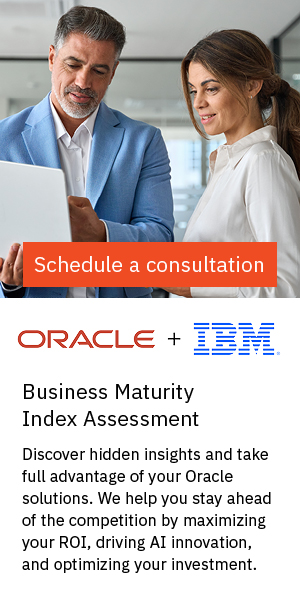Learn more about Oracle Cloud Infrastructure (OCI) document understanding and its integration with Rossera ProcessSense.
Oracle Document Understanding is a relatively recent service available exclusively on Oracle Cloud Infrastructure (OCI). It has been around for about a year now and represents a huge step forward in document processing technology as it leverages the power of AI, specifically machine learning.
Document Understanding enables developers to automate the extraction of text, structure and key information from business documents. Key to the service is that it sits a layer above the core machine learning layer of OCI. This allows developers to add AI services around document processing to their applications without having a data science background.

We’ve had OCR for years we hear you say? Well, think about OCR on steroids and you pretty much have it. Document Understanding is serverless, cloud-native and provides document processing capabilities using learning-based models offering both prebuilt and custom options. The interaction layer is via REST APIs which allows developers to easily integrate features into their applications. It’s not just about text extraction, it’s about understanding the context and content of documents to drive intelligent decisions and downstream processing.
Key features include text recognition (printed or handwritten documents), document classification, table extraction and key value extraction.
At Rossera, we often speak to clients that are still doing a lot of manual intervention with document processing around their ERP particularly in the finance and HR space. In the finance arena, we often see a high incidence of failures when processing things like invoices and bank statements using traditional OCR scanning methods. We also see customers devoting a lot of human processing to tasks around HR document management especially with industries that have high staff turnover/transfers or require complex employment contracts.
So how do clients leverage the power of Oracle Document Understanding with their existing ERP to improve document processing and meet legal or regulatory compliance?
Well, firstly they can invest in building the necessary integration between their ERP and OCI to leverage the new services but what if there is a need to embed the Document Understanding features into some of their core business processes? Customers often need to merge the data from the documents with the data in the Oracle ERP, execute approval routing and review phases as well as ensure audit and compliance from a governance perspective.
How ProcessSense Can Help
Rossera ProcessSense empowers organisations to configure end-to-end business processes that are fully integrated with Oracle Cloud Applications and Oracle E-Business Suite, offering workers compelling user experiences whilst driving greater self-service and automation. 100% powered by OCI, it provides a comprehensive framework for customers to automate business processes alongside native Oracle ERP processes using the same security with identical user experience and runs in the same data centres as the ERP platform.
ProcessSense is fully integrated with Oracle Document Understanding and can act as the control plane between OCI and the Oracle ERP providing the additional features around orchestration, approval workflow and audit to automate the end-to-end process whilst removing the need for customers to build the integration themselves.
Via configuration only, customers are able to get up and running with using Oracle Document Generation in ProcessSense processes without writing code or needing to understand the complexity of machine learning and REST APIs.

Custom Models
Oracle Document Understanding offers prebuilt models for business documents. Where a prebuilt model is insufficient, customers can train their own models using intuitive features within the OCI console.
Users are able to take sample images and documents and easily mark them up to identify key fields using a browser-based tool in the OCI console. Once defined, users can upload samples of documents to train the custom model. The more documents used to train the model, the better the interpretation of documents.
ProcessSense can interact with the custom model as part of a process flow. For any given document, Oracle Document Understanding will send ProcessSense the structure and key fields contained within it. ProcessSense automatically matches this structure to the data definition within the process, interprets whether a document is sufficiently complete and determines the next course of action. Where a document is sufficiently complete, ProcessSense can interact directly with Oracle ERP to import the data. Where a document requires approval routing or is insufficiently complete, ProcessSense can route the document to the relevant user who can perform the approval or augment the data to complete the transaction. ProcessSense can even merge the data within the document with data from the Oracle ERP where this is required.
Example Finance Use Case
Automatically trigger a ProcessSense transaction when a document is sent from an organisation. Extract key fields from the document using Oracle Document Understanding integration. Determine the document classification and automatically augment the information with data from the core ERP using ProcessSense Defaulting Data Sources. Route the document for approval prior to automatically load into the relevant Oracle ERP module.
Example HR Use Case
A worker requests a sabbatical absence type in Oracle ERP which automatically triggers a ProcessSense process. The user is requested to upload a justification as a document attachment including a table of critical business activities that they currently perform.
ProcessSense interacts with Oracle Document Understanding obtaining the key fields and a breakdown of the activities. The transaction is routed to the line manager allowing them to review the information which ProcessSense transposes into standard web form.
Information about who will carry out each of the business activities in the worker’s absence is added leveraging data in the ERP. The line manager submits the transaction for final approval from the HR personnel department. On approval, ProcessSense generates the relevant contractual documents, distributes this to the worker and uploads the original document as an attachment to the person’s HR record in Oracle ERP.
Conclusion
As businesses continue to seek ways to innovate and automate around document processing, Oracle Document Understanding stands out as a pivotal tool in the AI landscape. With its robust features and ease of use, it is poised to transform how organisations interact with their data, unlocking new levels of productivity and insight. For organisations that run Oracle E-Business Suite or Oracle Cloud Applications (Fusion), customers are able to leverage Rossera ProcessSense to provide the orchestration with Oracle Document Understanding bringing the power of process automation alongside document processing capabilities in the solution.






